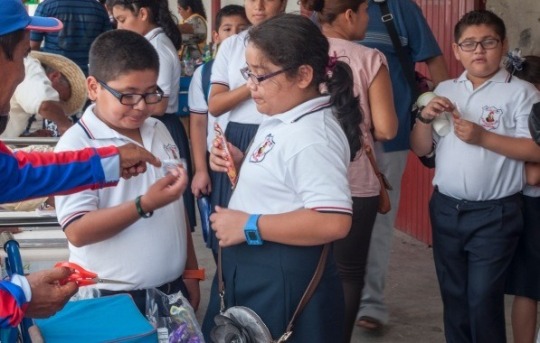Childhood Obesity in the USA – Is Ethnicity a factor?

Childhood obesity is a serious problem in the United States putting children and adolescents at risk for poor health. Obesity prevalence among children and adolescents is still too high.
For children and adolescents aged 2-19 years1:
- The prevalence of obesity was 18.5% and affected about 13.7 million children and adolescents.
- Obesity prevalence was 13.9% among 2- to 5-year-olds, 18.4% among 6- to 11-year-olds, and 20.6% among 12- to 19-year-olds. Childhood obesity is also more common among certain populations.
- Hispanics (25.8%) and non-Hispanic blacks (22.0%) had higher obesity prevalence than non-Hispanic whites (14.1%).
- Non-Hispanic Asians (11.0%) had lower obesity prevalence than non-Hispanic blacks and Hispanics.
When looking at the effects of economics we also see it playing a role.
- Obesity prevalence was 18.9% among children and adolescents aged 2-19 years in the lowest income group, 19.9% among those in the middle income group, and 10.9% among those in the highest income group.
Child obesity statistics and teenage obesity statistics have been tracked since 1963. Between then and now, the rate of obese children and teens has gone from about 4.5% (1 in 22) to over 18% (nearly 1 in 5).
Overweight and Obesity in Hispanic Youth
The children and adolescents of the Hispanic population are an important group to learn more about when it comes to overweight and obesity, since they comprise nearly a quarter (22%) of all children in the US under the age of 18.2 With the prevalence of obesity in this group >25%, identifying causes and implementing solutions to the overweight and obesity problem is critical.4The economic status of Hispanic children and adolescents varies with their generation status – non-US born children are more likely to live in poverty when compared to their peers who are third generation US born.4 However, first generation Hispanic youth, those not born in the US, typically exhibit better health indicators than their counterparts who were born in the US.2
The Hispanic Health Paradox
There are multiple variables at play in understanding why first generation Hispanic children and adolescents enjoy better health than those born in the US; some of these factors influencing the “Hispanic Health Paradox”5 may include – greater amounts of regular physical activity (including more outdoor activity and less screen time), greater exposure and adherence to ethnic-based diet (whole foods) including more fruits, vegetables, and whole grains, greater maintenance of cultural behaviors and rituals in family activities, and more two-parent households with frequent parental-child engagement.5,6
Many of the factors potentially influencing the aforementioned paradox can be categorized as modifiable lifestyle factors, including diet and physical activity. With the majority of the 16 million Hispanic/Latino children in the US being born in this country (89%),4 finding viable solutions to the obesity issues by targeting modifiable habits is important.
Lifestyle Intervention Targets Child and Guardian
A lifestyle intervention study published in the Journal of Complementary and Alternative Medicine7 was conducted by researchers at The University of Georgia (UGA) to examine the effectiveness of a 12-week lifestyle program on several parameters, including cardiometabolic, behavioral, and psychological outcomes in Hispanic children and adolescents who were overweight. Pediatric primary care patients (6 girls, 16 boys; mean age: 11.7 years) and their guardians participated in a case series study which included pre- and post-test analyses. During the 12-week intervention, the participants engaged in moderate-to-vigorous intensity boxing exercise training for 60 minutes 2x/week; in addition, their guardians underwent 12 hours of nutrition education, and the children were seen by a pediatrician (30 minute appointment).7
At the end of the 12-week intervention, significant improvements were seen in several variables:7
- ↓ waist circumference, BMI, and fasting glucose levels
- ↓ amotivation (“a state of lacking any motivation to engage in an activity, characterized by a lack of perceived competence and/or a failure to value the activity or its outcomes”)
- ↑ moderate and vigorous intensity physical activity levels
- ↑intrinsic motivation and introjected regulation (“motivation that comes from only partially internalized activities and values and motives such as avoiding shame, seeking approval, and protecting the ego”)
Although some of these studies focused on a specific higher risk sector of the population it is clear that these lifestyle changes can be implemented across the board.
Our children pave the way for future generations and help set the stage for what happens next. It is up to the current generation to participate in shaping healthier habits with our youth. Let’s help our children make better informed decisions and live a healthier life.




